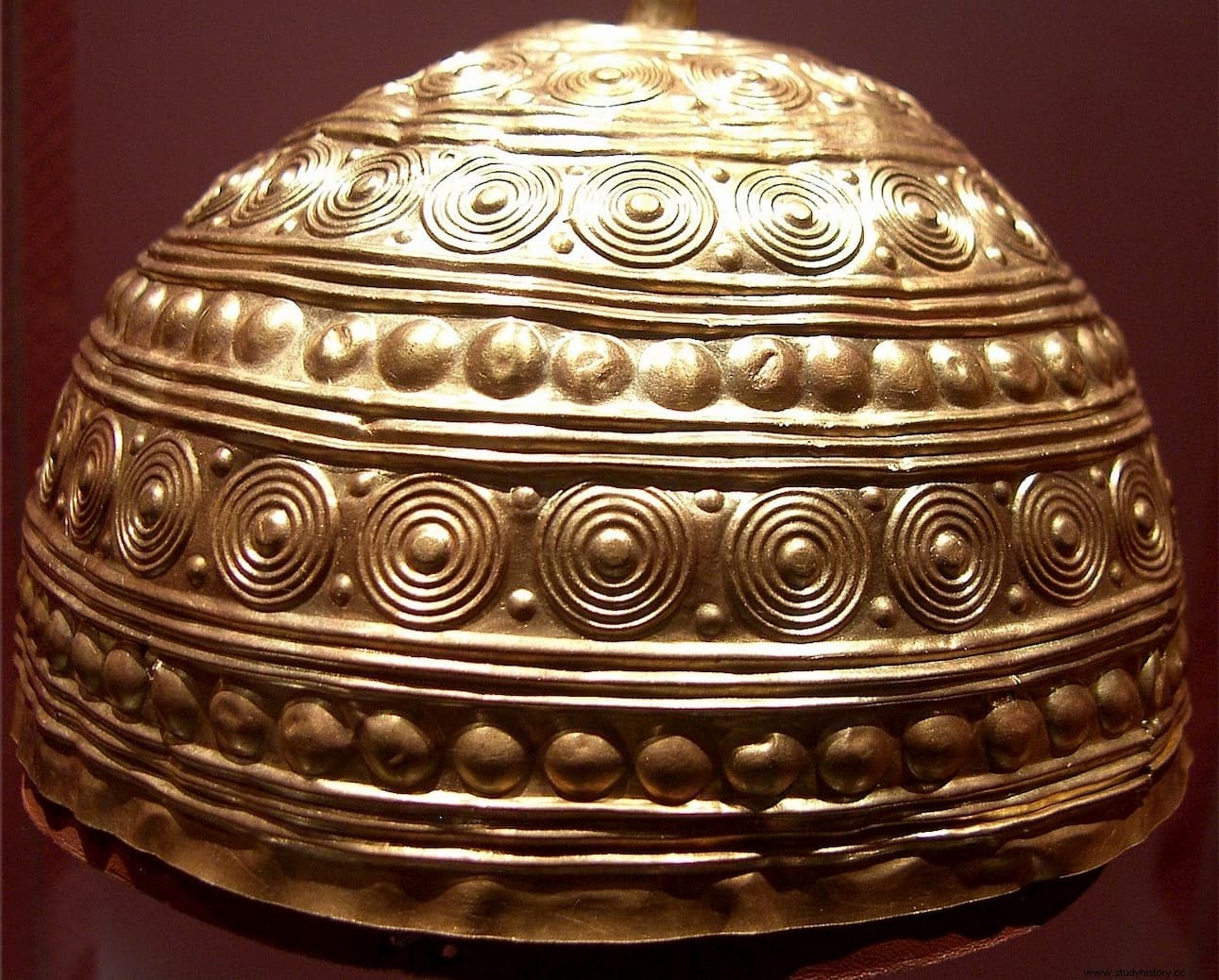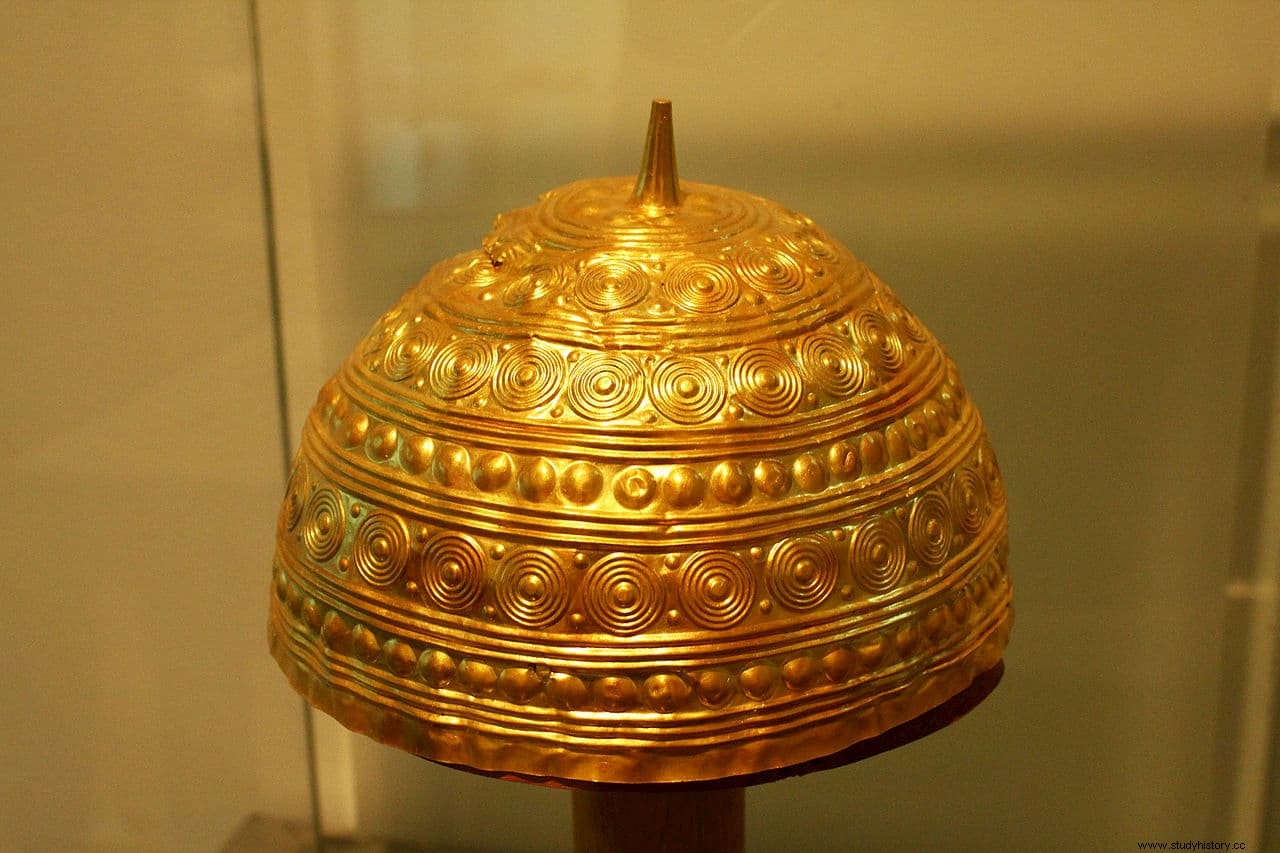It is called Leiro's Helmet, but in reality it is not known exactly if it is a helmet, a bowl, or another type of ritual object.
Made entirely of gold, it is a lightweight object that barely weighs 270 grams, with a diameter of 19.5 centimeters and a height of 15 centimeters. It was found on a rocky outcrop called Corruncho dos Porcos near Leiro beach, in the Coruña municipality of Rianxo, by fisherman José Vicente Somoza on April 7, 1976.
Somoza had recently acquired a 35-square-meter piece of land there and, while he was removing the earth to lay the foundations for a hut, he came across a kind of clay pot about 60 centimeters deep, inside which was a metallic object. which, at first, he believed to be made of iron.
Once it became clear that it was not iron, but pure gold, he kept it in his house for about three days, exposed to the curiosity of his neighbors. The Leiro priest advised him to keep it in a safe, but since he had to pay, he preferred to hand it over to the Civil Guard.

Finally, the Archaeological Museum of La Coruña kept the piece, not without controversy, and after paying Somoza one million pesetas for the artifact. According to his own account, a clause was included in the sales contract that the object could not leave the province.
The Helmet of Leiro It is hemispherical in shape, with a truncated cone-like appendage at its top. It is made in one piece and completely decorated with horizontal bands of embossed lines and concentric circles.
It has been dated to the Bronze Age, between 1000 and 800 BC and, as we said at the beginning, it is not known exactly what its use was. There is consensus in affirming that it is not a war helmet, but rather it could be a decorative helmet used only in certain ceremonies. But some archaeologists think that it could also be a representation of a breast of the Mother Goddess, according to the conical appendage. Or an inverted ritual bowl as a symbol of authority, which is the most accepted theory today.
In this sense, the conical appendage would serve to place it on some type of support, and its apparent lack of functionality would confirm the symbolic and ritual purpose of the object.

Its decoration links it to other finds from the same period, such as the Axtroki bowls in Guipúzcoa and the Villena Treasure in Alicante, as well as the cones from Avanton (Vienna), Schifferstadt (Rhineland) and Ezelsdort (Bavaria). This has led some to consider it an object from one of these places.
However, it seems that it has never been the subject of a monographic study or analysis of the material (at least that is what the researcher Beatriz Comendador affirms in an article published in 2003).
According to this same researcher, the fact that the object was found inside a ceramic piece would indicate that it was deliberately hidden, possibly to prevent its use or to protect it from third parties.
